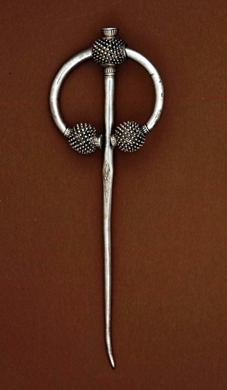The Vikings in Munster
- vikings6irelandlak
- May 4, 2024
- 3 min read
credit to Hlymrekr Viking group
Munster, the south-west province of Ireland has a rich Viking history, which was overshadowed by Dublin’s vikings. The Kingdom of Dublin was the biggest and longest-lasting Norse kingdom in Ireland. Present day Dublin is significantly larger than any other city in Ireland and offers the most archeological treasures from the viking and hiberno-norse cultures. However it is worth mentioning that three of the biggest settlements in Munster were founded by Vikings - Cork, Limerick and Waterford.
By the 9th century the annals report that the Vikings were raiding the south-west coast of Ireland. Vikings were responsible for the attacks on many churches and monasteries. They were easy targets even though a few may have maintained some form of militia. With time Vikings began spending the winter in Ireland, setting up camps for more extensive raiding, using the Shannon River as passageway deeper to the mainland. Some of these camps, known as longphorts, grew to become the most important towns and cities of Munster and Ireland but others, such as the ship base at Lough Derg, were to lapse into obscurity.
Dariusz Klis, from Fingal West Wing, with his replica of the Lough Derg sword and in the middle Ballynogan thistle brooch (© Museum of Archaeology and Anthropology, Cambridge) and to the right Fenit neck-ring, Co Kerry. (Creative Commons License)
The Vikings settling in Munster, during the 10th century, impacted the political landscape by introducing new players for power. Vikings of Limerick have challenged the Irish kings, other viking settlements and mainly the Kingdom of Dublin for control over land. It was a time of various dynamic alliances and rivalries between Norse and Gaelic Kingdoms. A good example of the dynamic relationships is the history of Waterford. An alliance of the Limerick vikings and the men of Munster defeated the Waterford vikings in 927 A.D. at Killmallock. 40 years later Norsemen from Limerick and Waterford fought together against Dalcassians (Brain Boru’s clan). 10 years later Brain Boru became allied with vikings from Waterford.
Deise Medieval, living history group based in Waterford
However it wasn’t just a time of constant conflicts. In order to survive the Vikings needed the support of their Irish neighbors. They could not rely on raiding for regular supplies of food, and settling more permanently left them more vulnerable to attacks, so they began to trade with the local Irish. Their skill in battle made them popular as mercenaries, and it was not uncommon to find Irish people and Vikings on both sides on a battlefield. This way warfare offered an opportunity for foreigners to coexist and eventually integrate with the Irish. Viking kingdoms sometimes developed strong alliances with local clans. Intermarrying was the simplest and most efficient way to achieve this. Norsmen would often marry local women. The story of Donovan son of Cahall (Donnubán mac Cathail), the ruler of the Irish kingdom of Uí Fidgenti (situated mostly in the modern county of Limerick) marrying the daughter of king Ivar of Limerick shows that this worked both ways. In many places a unified ‘Hiberno-Norse’ identity began to emerge. The Norse connection to the Uí Fidgenti (O’Donnovans) was visible even after centuries as they continued to carry Norse-dominated names. The connections are also noticeable in the place names all over Limerick.
Vikings left an impact on Munster’s history which signs can still be visible or waiting to be uncovered. There are many significant archeological findings including the largest necklace in Ireland consisting 71 glass beads covered with gold foil, the Ballynolan thistle brooch was found near Pallaskenry, Co. Limerick, necklace from Limerick and Kerry and many more.
Alex Ó Lao, an archeologist and one of the leaders of the White Horse Viking reenactment group from Cork said: “Through ongoing archaeological work throughout Munster we have had great discoveries over the years. From the likes of Corks Beamish and Crawford to Woodstown in Waterford, these sites have given us a glimpse into those famous Munstermen and their everyday lives. By continuing and supporting these archaeological digs we can only hope to discover more and help us improve our own understanding. The best part of archaeology is you never know what's under your feet till we start to dig down.” Find out more 18th & 19th May at Boyne Valley Viking Experience.





















Comments